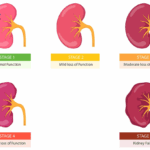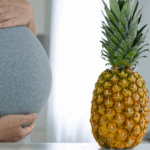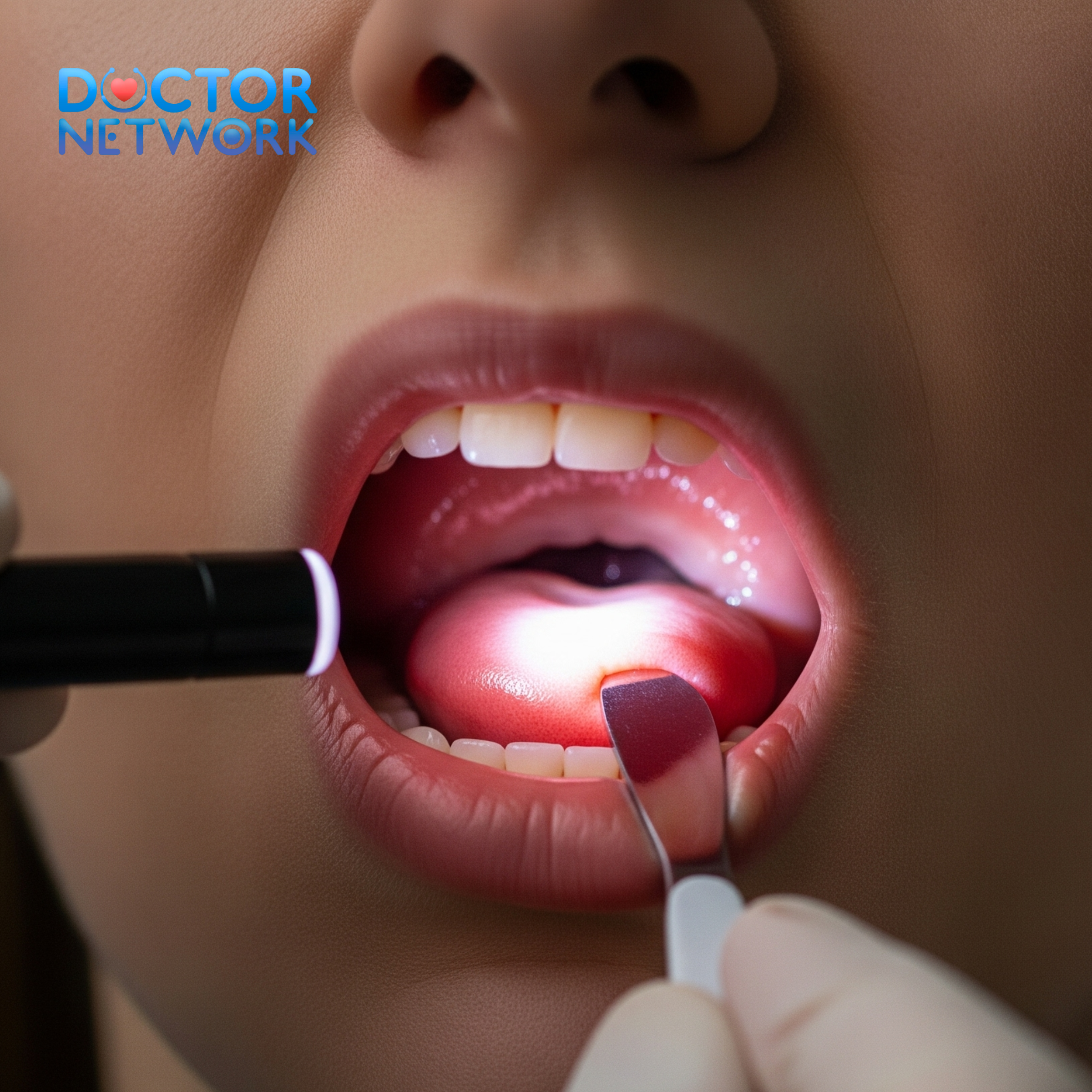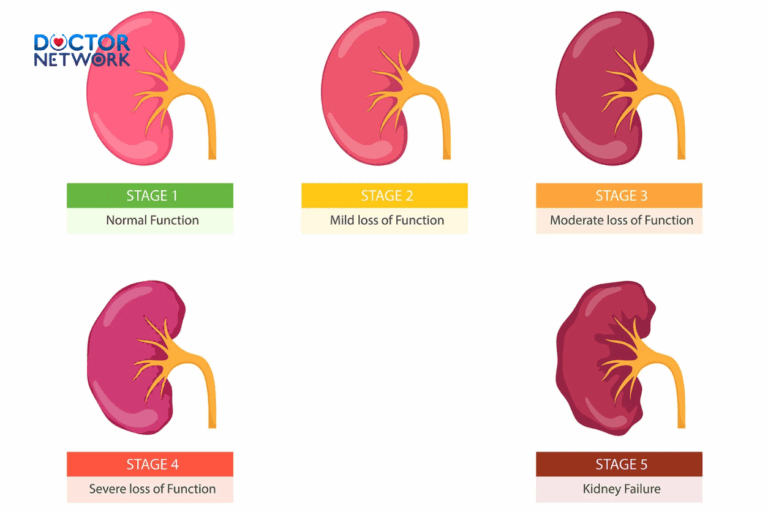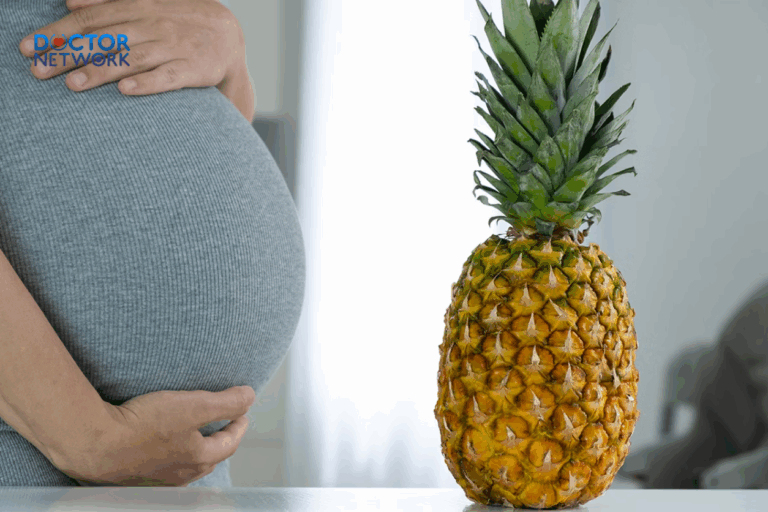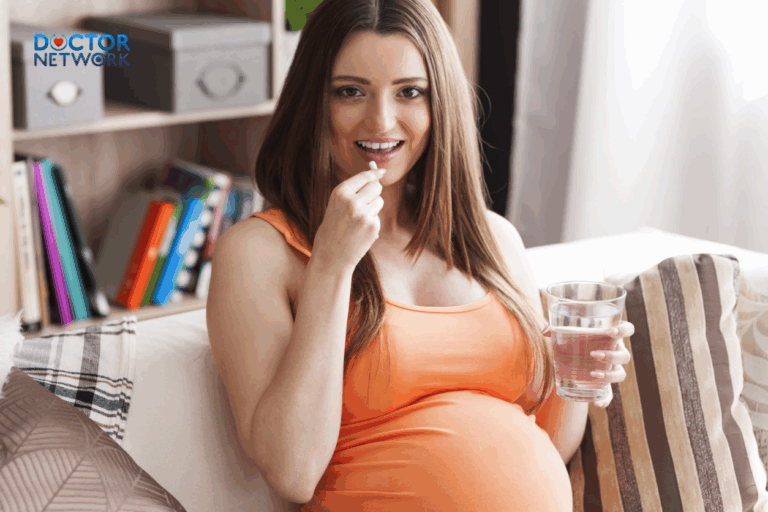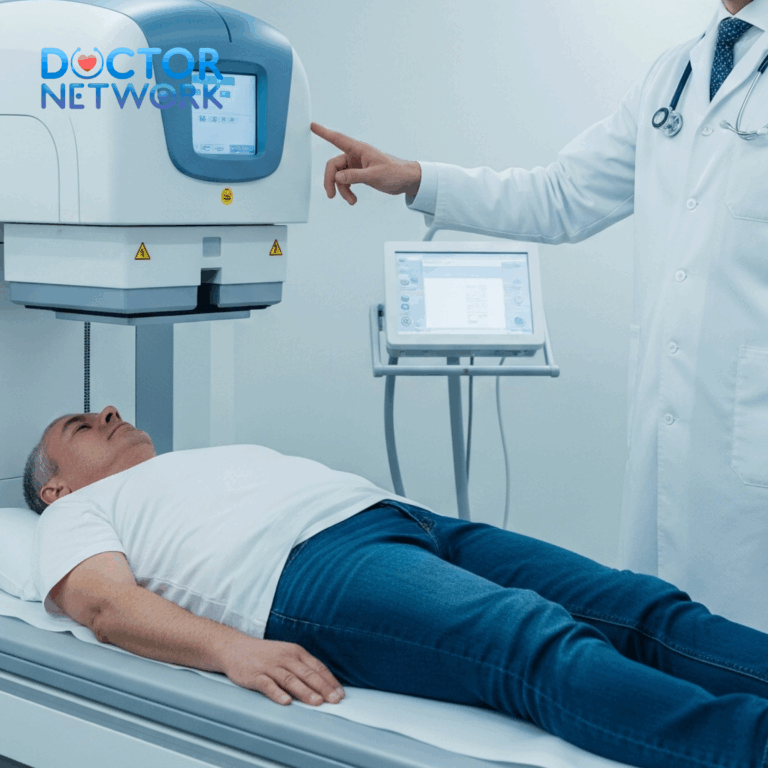Can you get pregnant during perimenopause? – Yes, you can absolutely get pregnant during perimenopause, though your fertility naturally declines during this transitional phase. Perimenopause represents the years leading up to menopause when your ovaries gradually produce less estrogen and progesterone, causing irregular menstrual cycles and unpredictable ovulation patterns. While conception becomes more challenging, ovulation still occurs intermittently, making pregnancy possible until you reach true menopause—defined as 12 consecutive months without a period.
This comprehensive guide examines the complex relationship between perimenopause and fertility, covering essential topics including hormonal changes affecting conception, statistical pregnancy rates by age, fertility testing methods, pregnancy risks during this life stage, and evidence-based strategies for those seeking to conceive or prevent pregnancy. Understanding these factors empowers women to make informed reproductive decisions during this significant biological transition.
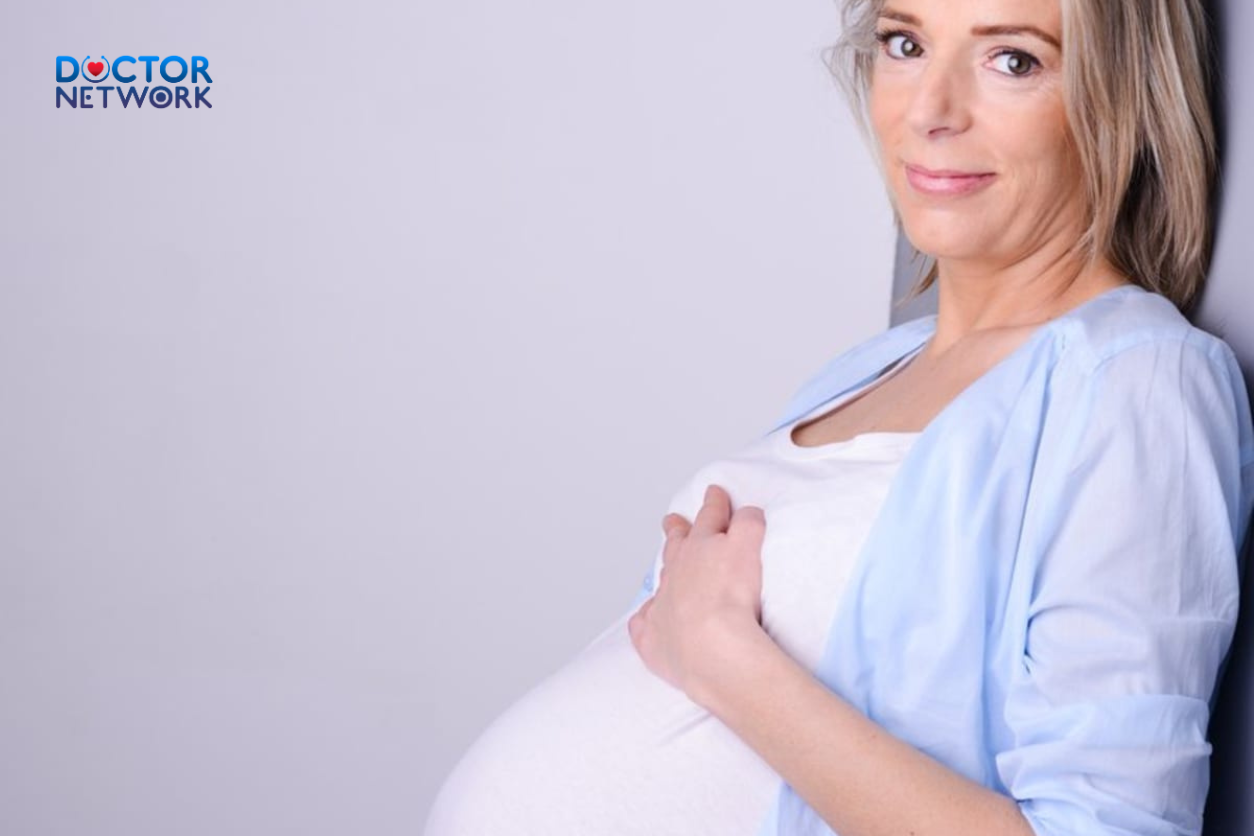
What Is Perimenopause and When Does It Begin?
Perimenopause typically begins between ages 40-44, though it can start as early as the mid-30s or as late as the early 50s. This menopausal transition averages four years in duration but ranges from several months to a full decade, depending on individual biological factors and genetic predisposition.
During perimenopause, your ovaries gradually reduce hormone production, particularly estrogen and progesterone. These fluctuating hormone levels create the hallmark irregularity in menstrual cycles that characterizes this phase. Unlike menopause itself, which marks the complete cessation of ovarian function, perimenopause involves sporadic ovulation and unpredictable fertility windows.
The transition progresses through distinct stages. Early perimenopause features subtle changes—perhaps cycles that are slightly shorter or longer than usual. Late perimenopause brings more dramatic shifts, with cycles potentially skipping months or varying significantly in flow intensity. Throughout this entire period, pregnancy remains biologically possible.
Common Perimenopause Symptoms
The hormonal fluctuations of perimenopause trigger numerous physical and emotional symptoms that significantly impact quality of life:
Menstrual Irregularities:
- Cycle length variations (shorter or longer than usual)
- Flow changes (heavier or lighter bleeding)
- Spotting between periods
- Intensified premenstrual syndrome (PMS)
Vasomotor Symptoms:
- Hot flashes affecting approximately 75% of perimenopausal women
- Night sweats disrupting sleep patterns
- Sudden temperature fluctuations throughout the day
Physical Changes:
- Vaginal dryness and decreased lubrication
- Reduced libido and sexual response
- Sleep disturbances and insomnia
- Weight gain, particularly around the midsection
- Urinary incontinence or urgency
Neurological and Emotional Symptoms:
- Mood swings and irritability
- Anxiety and depression
- Cognitive changes including “brain fog”
- Memory difficulties and concentration problems
Why Fertility Declines During Perimenopause
Fertility reduction during perimenopause stems from fundamental changes in ovarian function and egg quality. Women are born with a finite number of eggs—approximately 1-2 million at birth, declining to about 400,000 by puberty. This ovarian reserve continues diminishing throughout reproductive years, with roughly 1,000 follicles lost monthly.
Hormonal Changes Affecting Conception
The intricate hormonal orchestra governing reproduction becomes increasingly discordant during perimenopause. Anti-Müllerian hormone (AMH), produced by developing follicles, steadily decreases as ovarian reserve diminishes. Simultaneously, follicle-stimulating hormone (FSH) levels rise as the pituitary gland works harder to stimulate increasingly unresponsive ovaries.
These hormonal shifts create several fertility challenges:
Irregular Ovulation Patterns: Ovulation becomes unpredictable, occurring sporadically rather than monthly. Some cycles may be anovulatory (without ovulation), while others produce multiple eggs, increasing the likelihood of fraternal twins.
Decreased Egg Quality: The remaining eggs have aged alongside the woman, accumulating cellular damage over decades. This deterioration increases the risk of chromosomal abnormalities and impacts embryo development potential.
Hormonal Imbalances: Fluctuating estrogen and progesterone levels can affect endometrial development, potentially compromising implantation success even when fertilization occurs.
Age-Related Fertility Statistics
| Age Range | Relative Fertility Rate | Monthly Conception Probability |
|---|---|---|
| 20-24 | 1.0 (baseline) | 20-25% |
| 25-29 | 0.96 | 20-25% |
| 30-34 | 0.87 | 15-20% |
| 35-39 | 0.60 | 10-15% |
| 40-44 | 0.36 | 5-10% |
| 45+ | 0.05 | <5% |
These statistics demonstrate the progressive decline in natural fertility, with the most dramatic reduction occurring after age 35. However, these numbers represent averages—individual variation is substantial.
Natural Pregnancy Chances During Perimenopause
Conception during perimenopause remains possible but becomes increasingly unlikely with advancing age. The probability of natural pregnancy at age 45 drops to approximately 1-2% per cycle, though some women successfully conceive naturally even in their late 40s.
Factors Influencing Conception Success
Several variables affect pregnancy likelihood during perimenopause:
Individual Biological Factors:
- Genetic predisposition to early or late menopause
- Overall health status and chronic conditions
- Previous pregnancy history
- Lifestyle factors including smoking, alcohol consumption, and body weight
Ovarian Reserve Indicators:
- AMH levels (normal range: 1.0-4.0 ng/mL for reproductive age)
- FSH levels (elevated levels >10-15 IU/L suggest diminished reserve)
- Antral follicle count via ultrasound examination
Timing and Frequency of Intercourse: Even with irregular cycles, identifying potential fertile windows through ovulation tracking methods can optimize conception chances.
The Importance of Contraception
Contraception remains essential throughout perimenopause unless pregnancy is desired. The unpredictable nature of ovulation means that sexually active women can conceive unexpectedly, even after months without menstruation.
Healthcare providers recommend continuing contraceptive methods until:
- Twelve consecutive months without menstruation (confirmed menopause)
- Age 50-55, depending on individual risk factors
- Laboratory confirmation of post-menopausal hormone levels
Fertility Testing and Assessment Methods
Comprehensive fertility evaluation during perimenopause involves multiple assessment tools to determine remaining reproductive potential and guide treatment decisions.
Hormonal Assessments
Anti-Müllerian Hormone (AMH) Testing: AMH provides the most reliable indicator of ovarian reserve. Unlike other reproductive hormones, AMH levels remain relatively stable throughout the menstrual cycle, making it an ideal screening tool. Results interpretation:
- Normal: 1.0-4.0 ng/mL
- Low: 0.5-1.0 ng/mL
- Very low: <0.5 ng/mL
Follicle-Stimulating Hormone (FSH) Evaluation: FSH levels fluctuate significantly during perimenopause, limiting diagnostic reliability. Testing typically occurs on cycle day 3 for women with regular periods. Elevated levels (>10-15 IU/L) suggest diminished ovarian function.
Additional Hormonal Markers:
- Estradiol levels (should be <80 pg/mL on day 3)
- Inhibin B (decreases with declining ovarian reserve)
- Luteinizing hormone (LH) ratios
Ultrasound Examinations
Transvaginal ultrasound provides visual assessment of ovarian function through antral follicle counting. This procedure, performed during the early follicular phase, counts visible follicles measuring 2-10mm in diameter. Results interpretation:
- Normal: >10-12 follicles total
- Reduced: 5-10 follicles total
- Severely reduced: <5 follicles total
Clinical Implications of Low Ovarian Reserve
Women with diminished ovarian reserve face several reproductive challenges:
Natural Conception Limitations: Reduced egg quantity and quality significantly decrease monthly conception probabilities. Even with regular ovulation, pregnancy rates remain lower than age-matched peers with normal reserves.
Assisted Reproductive Technology Considerations: In vitro fertilization (IVF) success rates decline with diminished ovarian reserve:
| Age Group | IVF Success Rate (Own Eggs) | IVF Success Rate (Donor Eggs) |
|---|---|---|
| <35 | 41.5% | 51.0% |
| 35-37 | 33.8% | 51.0% |
| 38-40 | 23.0% | 51.0% |
| 41-42 | 13.6% | 51.0% |
| 43-44 | 6.2% | 51.0% |
| >44 | 1.0% | 51.0% |
These statistics highlight the dramatic impact of maternal age on IVF outcomes and the consistent success rates achieved with donor eggs.
Strategies to Optimize Fertility During Perimenopause
Women seeking conception during perimenopause can implement evidence-based strategies to maximize their reproductive potential, though success cannot be guaranteed.
Lifestyle Modifications
Smoking Cessation: Tobacco use accelerates ovarian aging and advances menopause onset by 1-2 years. Smoking cessation improves egg quality and overall reproductive health within months of quitting.
Nutritional Optimization: A Mediterranean-style diet rich in antioxidants, omega-3 fatty acids, and complex carbohydrates supports reproductive health. Key nutritional components include:
- Folate supplementation (400-800 mcg daily)
- Vitamin D optimization (maintain levels >30 ng/mL)
- Omega-3 fatty acids (1-2 grams daily)
- Coenzyme Q10 (100-600 mg daily for egg quality)
Exercise and Weight Management: Regular moderate exercise improves fertility outcomes, while excessive high-intensity training may suppress ovulation. Maintaining a healthy BMI (18.5-24.9) optimizes hormonal balance and conception chances.
Stress Management: Chronic stress elevates cortisol levels, potentially disrupting reproductive hormones. Effective stress reduction techniques include:
- Mindfulness meditation
- Yoga practice
- Adequate sleep (7-9 hours nightly)
- Professional counseling when needed
Complementary Approaches
Acupuncture Therapy: Some studies suggest acupuncture may improve fertility outcomes by enhancing blood flow to reproductive organs and regulating hormonal balance. While evidence remains mixed, this low-risk intervention may provide additional benefits.
Cycle Tracking Methods: Despite irregular periods, identifying potential fertile windows remains valuable. Modern fertility tracking apps and devices can help detect ovulation patterns through:
- Basal body temperature monitoring
- Cervical mucus assessment
- Luteinizing hormone surge detection
- Smartphone-based fertility apps
Assisted Reproductive Technologies
In Vitro Fertilization (IVF): IVF represents the most effective treatment for age-related fertility decline. The process involves controlled ovarian stimulation, egg retrieval, fertilization in the laboratory, and embryo transfer. Success rates vary significantly based on age and ovarian reserve.
Egg Donation: For women with severely diminished ovarian reserve, egg donation provides significantly higher success rates. Donor eggs from younger women bypass age-related egg quality issues while allowing the recipient to experience pregnancy and childbirth.
Preimplantation Genetic Testing: Given increased chromosomal abnormality risks in older eggs, preimplantation genetic testing (PGT) can identify genetically normal embryos for transfer, improving success rates and reducing miscarriage risks.
Pregnancy Risks During Perimenopause
Pregnancy during perimenopause carries increased risks for both mother and baby compared to younger maternal ages. Understanding these risks enables informed decision-making and appropriate medical management.
Maternal Complications
Pregnancy-Related Hypertensive Disorders: Preeclampsia risk increases significantly with maternal age, affecting 5-10% of pregnancies in women over 40 compared to 2-3% in younger women. This serious condition requires careful monitoring and may necessitate early delivery.
Gestational Diabetes: Diabetes during pregnancy occurs in 3-5% of younger women but rises to 7-12% in those over 40. Risk factors include pre-existing insulin resistance, family history, and previous gestational diabetes.
Placental Abnormalities: Placenta previa (placenta covering the cervix) and placental abruption (premature separation) occur more frequently with advancing maternal age, potentially requiring cesarean delivery or causing pregnancy complications.
Multiple Pregnancy: Higher FSH levels during perimenopause increase the likelihood of releasing multiple eggs, raising the chance of fraternal twins. While often viewed positively, multiple pregnancies carry increased risks including preterm birth and low birth weight.
Fetal and Neonatal Risks
Chromosomal Abnormalities: The risk of chromosomal abnormalities increases exponentially with maternal age:
| Maternal Age | Down Syndrome Risk | Any Chromosomal Abnormality |
|---|---|---|
| 35 | 1 in 350 | 1 in 200 |
| 40 | 1 in 100 | 1 in 65 |
| 45 | 1 in 30 | 1 in 20 |
Pregnancy Loss: Miscarriage rates increase substantially with maternal age, affecting 10-15% of pregnancies in women under 35 but rising to 40-50% after age 42. Most losses result from chromosomal abnormalities incompatible with fetal development.
Preterm Birth and Low Birth Weight: Babies born to mothers over 40 face higher risks of preterm delivery (before 37 weeks) and low birth weight (<2,500 grams), which can impact long-term health and development.
Stillbirth: The risk of stillbirth (fetal death after 20 weeks) increases with maternal age, affecting approximately 1 in 200 pregnancies in women over 40 compared to 1 in 400 in younger women.
Recognizing Pregnancy During Perimenopause
Identifying pregnancy during perimenopause presents unique challenges due to overlapping symptoms between early pregnancy and perimenopausal changes.
Symptom Overlap Challenges
Both pregnancy and perimenopause can cause:
- Missed or irregular periods
- Fatigue and exhaustion
- Mood changes and irritability
- Sleep disturbances
- Breast tenderness
- Nausea (though more common in pregnancy)
Definitive Pregnancy Testing
Home Pregnancy Tests: Over-the-counter urine tests detect human chorionic gonadotropin (hCG), a hormone produced by the developing placenta. Modern tests can identify pregnancy as early as the first day of a missed period, though accuracy improves with delayed testing.
Blood Tests: Serum beta-hCG testing provides more sensitive and quantitative results than urine tests. This method can detect pregnancy earlier and monitor hormone progression to confirm viable pregnancy development.
Professional Medical Evaluation: Healthcare providers can distinguish between perimenopausal symptoms and pregnancy through comprehensive evaluation including physical examination, laboratory testing, and ultrasound when appropriate.
Common Misconceptions About Perimenopause and Pregnancy
Several widespread myths persist regarding fertility during perimenopause, leading to inadequate contraception or unrealistic expectations about conception chances.
Myth 1: Perimenopause Symptoms Prevent Healthy Pregnancy
Reality: While complications increase with maternal age, many women experience healthy pregnancies during perimenopause. The presence of perimenopausal symptoms doesn’t preclude successful conception or pregnancy outcomes. Age-related risks stem from declining egg quality and quantity rather than symptoms themselves.
Myth 2: Contraception Is Unnecessary During Perimenopause
Reality: Ovulation continues throughout perimenopause, making unplanned pregnancy possible even with irregular periods. Some women ovulate sporadically for years before reaching menopause, necessitating continued contraceptive use until post-menopausal status is confirmed.
Myth 3: Perimenopause Indicates Complete Fertility Loss
Reality: Perimenopause represents a gradual transition rather than an abrupt fertility cessation. While conception becomes increasingly unlikely, ovulation can occur unpredictably throughout this phase. Complete fertility loss only occurs after menopause is established.
Myth 4: Hormone Replacement Therapy Provides Contraception
Reality: Hormone replacement therapy (HRT) treats perimenopausal symptoms but does not prevent pregnancy. Women using HRT who wish to avoid conception must use additional contraceptive methods.
Professional Medical Guidance and When to Seek Help
Consulting healthcare providers becomes increasingly important during perimenopause, whether seeking pregnancy or managing symptoms.
For Women Seeking Pregnancy
Immediate Consultation Recommended:
- Women over 40 should consult fertility specialists before attempting conception
- Those over 35 should seek help after 6 months of unsuccessful attempts
- Anyone with irregular cycles or concerning symptoms should pursue evaluation
Specialist Referrals:
- Reproductive endocrinologists for fertility assessment and treatment
- Maternal-fetal medicine specialists for high-risk pregnancy management
- Genetic counselors for chromosome abnormality risk assessment
For Women Avoiding Pregnancy
Contraceptive Counseling: Healthcare providers can recommend appropriate contraceptive methods based on individual health profiles, preferences, and contraindications. Options include:
- Hormonal methods (pills, patches, rings)
- Long-acting reversible contraceptives (IUDs, implants)
- Barrier methods
- Permanent sterilization procedures
When to Seek Medical Attention
Urgent Evaluation Needed:
- Severe bleeding or hemorrhage
- Intense abdominal pain
- Signs of ectopic pregnancy (shoulder pain, dizziness, fainting)
- Severe headaches or vision changes during pregnancy
Routine Consultation Recommended:
- Unbearable perimenopausal symptoms affecting quality of life
- Confirmation of symptom causes
- Abnormal bleeding patterns requiring investigation
- Preventive care for menopause-related health risks
Conclusion
Pregnancy during perimenopause remains biologically possible though increasingly unlikely with advancing age. While fertility declines significantly during this transitional phase, ovulation continues sporadically until menopause is established, making both planned and unplanned pregnancies possible outcomes.
Understanding the complex interplay between declining ovarian function, hormonal fluctuations, and pregnancy risks empowers women to make informed reproductive choices. Those seeking conception should pursue prompt medical evaluation and consider assisted reproductive technologies when appropriate, while those avoiding pregnancy must maintain effective contraception throughout the perimenopausal transition.
The key to navigating perimenopause successfully lies in recognizing that this phase represents a gradual transition rather than an abrupt fertility cessation. Professional medical guidance remains essential for optimizing outcomes, whether the goal is achieving pregnancy or managing the challenges of this significant life transition. Through comprehensive understanding and appropriate medical support, women can confidently navigate their reproductive choices during perimenopause.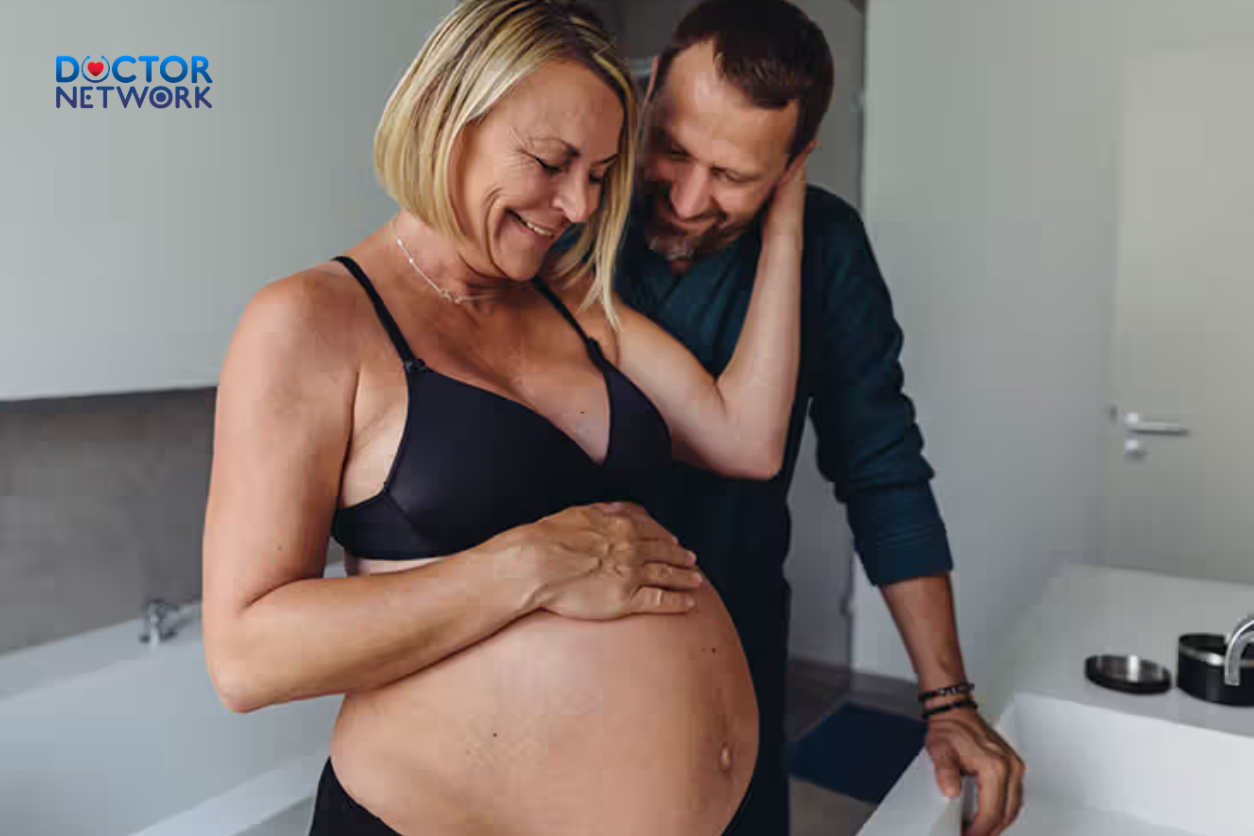 5 frequently asked questions about “can you get pregnant during perimenopause”
5 frequently asked questions about “can you get pregnant during perimenopause”
1. Can you get pregnant during perimenopause?
Yes, it is still possible to get pregnant during perimenopause. Although fertility declines as hormone levels fluctuate and ovulation becomes irregular, as long as you are still having periods and ovulating, pregnancy can occur naturally. The chance of pregnancy decreases with age but does not drop to zero until menopause is reached (defined as 12 consecutive months without a period).
2. How likely is pregnancy during perimenopause?
Pregnancy rates during perimenopause are lower than in younger years but not negligible. For women aged 40-44, the pregnancy rate is estimated at 10-20%, and for those 45-49, about 12%. The odds depend on how often ovulation occurs and the quality of remaining eggs, which decline over time.
3. What causes fertility decline during perimenopause?
Fertility decline is mainly due to hormonal fluctuations and a decreasing ovarian reserve. Estrogen and progesterone levels become erratic, ovulation may be sporadic or absent in some cycles, and egg quality deteriorates. This leads to irregular or missed periods and reduced chances of conception.
4. Should contraception still be used during perimenopause if pregnancy is not desired?
Yes, contraception should be used during perimenopause if pregnancy is not wanted. Because pregnancy is still possible until menopause is confirmed, guidelines recommend continuing contraception for at least two years after the last period if under 50, and at least one year if over 50. After age 55, contraception can usually be stopped as pregnancy chances become extremely rare.
5. What should women do if they want to conceive during perimenopause?
Women who want to conceive during perimenopause should track ovulation carefully, as cycles can be irregular. Hormone monitoring, ovulation kits, or fertility specialist consultation can help identify fertile windows. Fertility treatments like timed intercourse, intrauterine insemination (IUI), or egg freezing may be options depending on ovarian reserve and overall health.
References
1. The Biological Basis: Irregular but Present Ovulation
Perimenopause is characterized by hormonal fluctuations, not a complete shutdown of ovarian function.
Mechanism: The transition to menopause involves erratic hormone production. Follicle-Stimulating Hormone (FSH) levels begin to rise as the ovaries become less responsive. However, this process is not linear. The ovaries can still sporadically respond to FSH, leading to the maturation and release of an egg (ovulation). Because ovulation can still occur, conception is possible.
Scientific Evidence & Source:
Study: The Study of Women’s Health Across the Nation (SWAN) is a large, multi-site, longitudinal, epidemiological study designed to examine the health of women during their middle years.
Authors: The study has numerous authors, with key publications led by researchers like Nancy E. Santoro, M.D., Siobán D. Harlow, and others.
Source: Published in numerous prestigious journals, including the Journal of Clinical Endocrinology & Metabolism. SWAN data has shown definitively that even as cycles become irregular in perimenopausal women, ovulatory cycles continue to occur intermittently. For example, a 2004 study by Santoro et al. in JCEM titled “Characterizing Reproductive Hormonal Dynamics in the Perimenopause” used daily urine samples to show the unpredictable hormonal patterns and persistence of ovulatory potential.
Finding: Women in perimenopause experience a mix of normal ovulatory cycles, anovulatory cycles (no egg released), and cycles with luteal phase defects, but the potential for a viable ovulation remains until the final menstrual period.
2. Epidemiological Data: Age-Related Fertility and Unintended Pregnancies
Statistics on age-related fertility and pregnancy rates provide concrete evidence.
Mechanism: Large-scale population studies track natural fertility rates (conception rates in couples not using contraception). These studies consistently show a steep decline in fertility after age 35, but it does not reach zero until the early 50s for most women.
Scientific Evidence & Study:
Review Article: “Can assisted reproduction technology compensate for the natural decline in fertility with age? A model assessment.” This paper is a famous review of historical population data.
Author: Henri Leridon, a renowned French demographer.
Source: Human Reproduction, 2004. Leridon synthesized data from several historical populations where contraception was not used.
Finding: The data showed that by age 40, about 40-50% of women are infertile. However, this means 50-60% are still fertile. By age 45, the percentage of infertile women rises to about 85%, but that still leaves a 15% chance of natural conception. This data quantifies the remaining, albeit reduced, fertility during the typical perimenopausal years.
Further Evidence (Unintended Pregnancies):
Source: Centers for Disease Control and Prevention (CDC) National Center for Health Statistics.
Author/Origin: The CDC, a U.S. government agency.
Finding: The CDC regularly reports on birth rates by age. While the rates are low, thousands of babies are born each year to women over 40 in the United States. Furthermore, studies on unintended pregnancies often highlight the 40+ age group. A report from the Guttmacher Institute (“Unintended Pregnancy in the United States,” 2016) noted that a significant portion of pregnancies in women over 40 are unintended, often because women mistakenly believe they are no longer fertile and have stopped using contraception prematurely.
3. Clinical Guidelines and Expert Consensus
Based on the biological and epidemiological evidence, major medical bodies have established clear clinical recommendations.
Mechanism: The risk of unintended pregnancy, which can carry higher health risks for both mother and fetus in this age group, has led to a strong consensus on the need for continued contraception.
Scientific Evidence & Source:
Guideline: The American College of Obstetricians and Gynecologists (ACOG) provides practice guidelines for its members.
Author/Origin: ACOG Committee on Practice Bulletins—Gynecology.
Source: ACOG Practice Bulletin No. 198: “Prevention of Pregnancy in Women With Systemic Lupus Erythematosus” and other documents on contraception discuss age-related needs. More directly, ACOG’s clinical guidance consistently states that contraception is needed until menopause is confirmed.
Recommendation: ACOG and other international bodies recommend that women should continue to use contraception for 12 months after their last menstrual period (LMP). Some guidelines suggest 24 months for women who experience their LMP before the age of 50, due to a higher chance of a sporadic return of ovulation.
Scientific Evidence & Source:
Guideline: The North American Menopause Society (NAMS) position statements.
Author/Origin: NAMS, a leading scientific organization dedicated to promoting women’s health during midlife and beyond.
Source: The 2022 Hormone Therapy Position Statement of The North American Menopause Society. While focused on HT, these statements are predicated on the understanding of perimenopausal physiology.
Recommendation: NAMS explicitly states that “perimenopause is a time of declining fertility, but contraception is still needed to prevent pregnancy.” They support the “one year after LMP” rule for discontinuing contraception.
Kiểm Duyệt Nội Dung
More than 10 years of marketing communications experience in the medical and health field.
Successfully deployed marketing communication activities, content development and social networking channels for hospital partners, clinics, doctors and medical professionals across the country.
More than 6 years of experience in organizing and producing leading prestigious medical programs in Vietnam, in collaboration with Ho Chi Minh City Television (HTV). Typical programs include Nhật Ký Blouse Trắng, Bác Sĩ Nói Gì, Alo Bác Sĩ Nghe, Nhật Ký Hạnh Phúc, Vui Khỏe Cùng Con, Bác Sỹ Mẹ, v.v.
Comprehensive cooperation with hundreds of hospitals and clinics, thousands of doctors and medical experts to join hands in building a medical content and service platform on the Doctor Network application.











